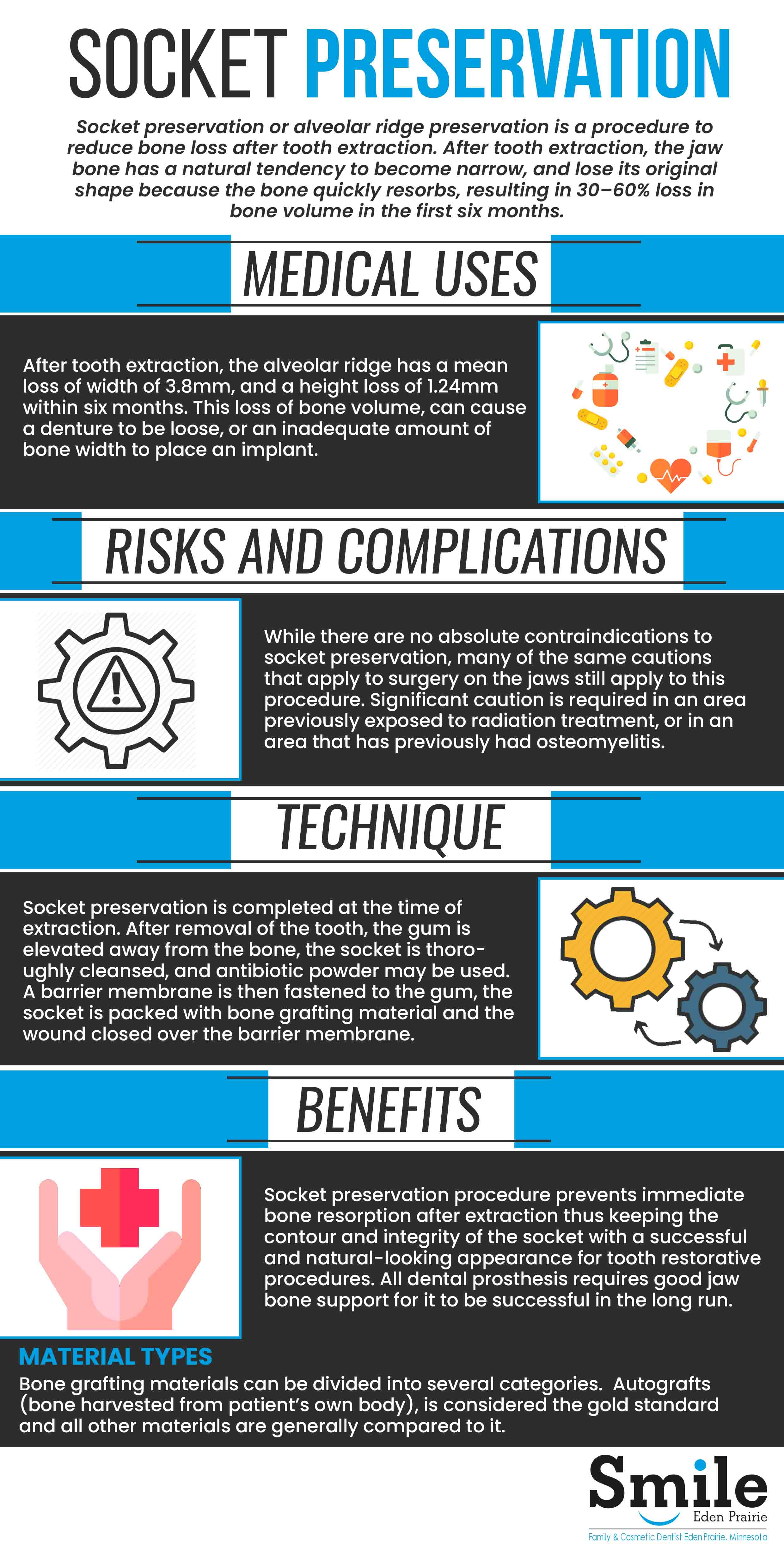General Dentistry Concepts: Socket preservation
Socket preservation, also known as alveolar ridge preservation, is a procedure used to reduce bone loss following a tooth extraction. After a tooth is extracted, the jaw bone naturally becomes narrow and loses its original shape. This is because the bone quickly resorbs which results in about a 30 to 60% loss in bone volume within the first six months. Bone loss can compromise the ability to replace the tooth with a dental implant. It can also compromise the aesthetics and functionality.
Socket preservation aims to prevent further bone loss by bone grafting the socket immediately following the extraction. In the socket preservation procedure, the gum is retracted, the tooth is removed, and a material is placed in the empty tooth socket. The area is then covered with a barrier membrane and closed with sutures. About 30 days after socket preservation, the barrier membrane is removed or absorbs. The callous of bone then covers with new gingiva. While there is promising evidence that socket preservation helps to prevent bone loss, there is no definitive proof that this results in higher long-term success with implants.
Medical Uses
After a tooth extraction, the alveolar ridge experiences significant bone loss within the first six months. This reduction in bone volume can cause issues with dentures or an inadequate amount of bone for placing an implant. In the past, alveolar preservation was used to create a strong base for dentures. Advances in modern dentistry have expanded the need of the procedure to establish a strong base for the placement of a dental implant. In some cases, when a tooth is removed when other teeth still need to erupt, socket preservation is used to maintain bone long enough for the formative tooth to erupt.
Risks and complications
While there are no absolute reason not to perform socket preservation, many of the same cautions which apply to jaw surgery also apply to this procedure. Strong caution is required on any areas which were previously exposed to radiation treatment. Other considerations for potential risk include the concurrent use of bisphosphonate, and denosumab, smoking, diabetes, immunodeficiency and infection.
Another consideration is the risk of the loss of bone and soft tissue on the subsequent implant for the long-term. Socket preservation has been associated with a greater risk of possible bone loss.
Technique
Socket preservation is completed simultaneous to the tooth extraction. After the tooth is removed, the gum is elevated away from the bone. The socket is then thoroughly cleaned and an antibiotic powder is often used. A barrier membrane is then attached to the gum and the socket is packed with bone grafting material. The wound is finally closed over the barrier membrane. In instances where the barrier membrane does not dissolve on its own, it is removed about 30 days after placement. The graft becomes incorporated into the healing bone approximately 3 to 9 months later.
Benefits
The socket preservation procedure helps prevent immediate bone resorption after extraction. This helps maintain the contour and integrity of the socket in addition to maintaining a natural-looking appearance for future restorative procedures. All dental prosthesis options require a strong jaw bone support in order to be successful. Without socket preservation, the remaining bones can lose volume which results in loss of facial vertical and horizontal dimension in addition to changes in facial soft tissues aesthetics.

